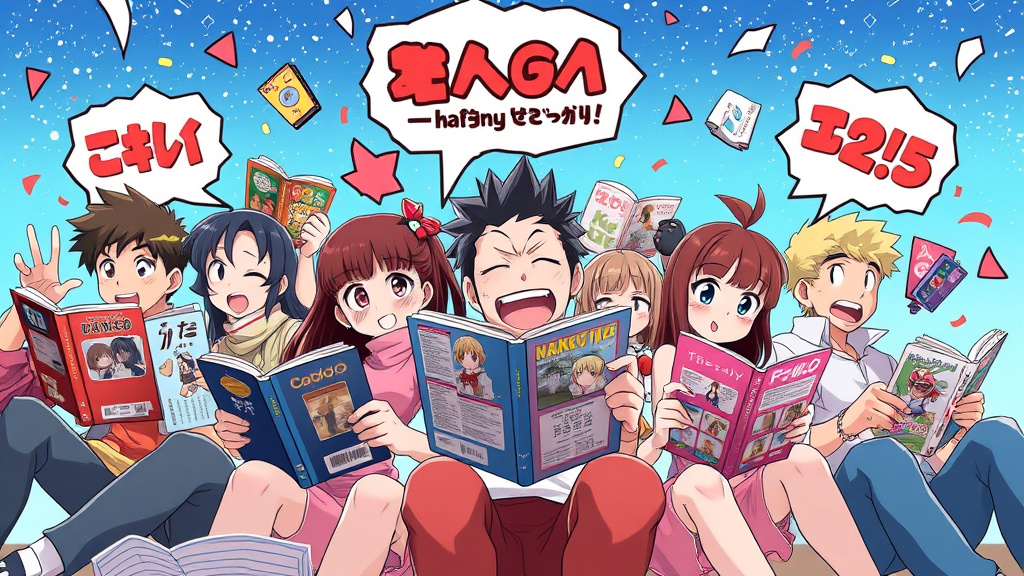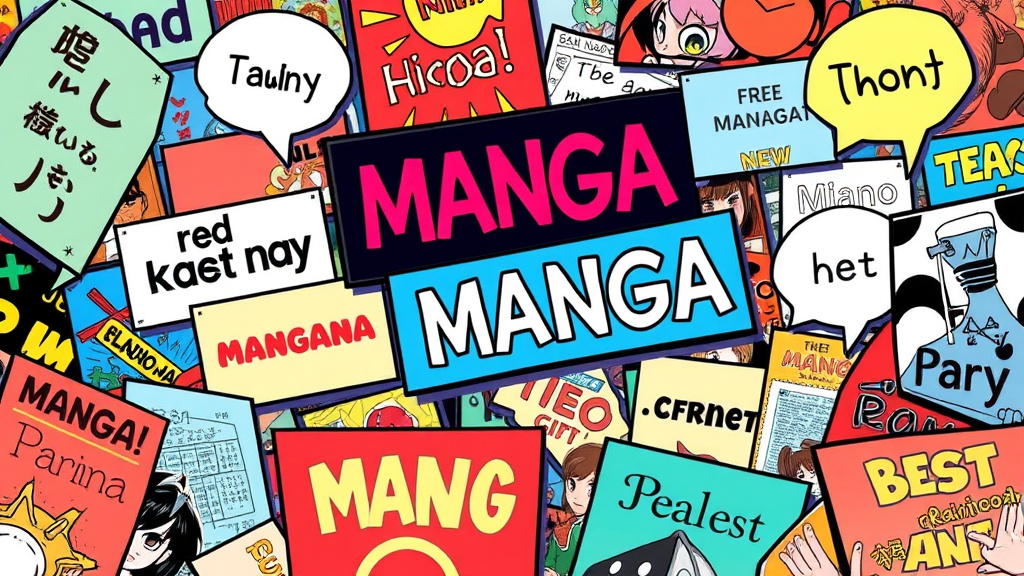Chưa có sản phẩm trong giỏ hàng.
Thiết kế nội thất
Deciphering Manga – How to Read Manga Right-to-Left and Unlock Its Visual Language
Mục lục
manga how to read might seem straightforward at first glance, but understanding the intricacies of manga reading requires not only familiarity with its distinctive format but also appreciation of its cultural and artistic nuances. Whether you’re a newcomer eager to dive into your first manga or an experienced reader seeking to deepen your appreciation, mastering manga’s unique reading conventions is essential. This guide aims to illuminate the core skills and insights needed to read manga effectively, from panel layouts to cultural references, helping you enjoy manga like a true connoisseur.
Deciphering Manga: A Beginner’s Guide to Reading Right-to-Left
Most manga is traditionally published in Japan and follows the right-to-left reading direction, both in terms of pages and panel flow. For newcomers, this can initially seem counterintuitive, especially if accustomed to Western comic book reading patterns. To begin, it’s important to adjust your mindset and start from the back of the book, moving towards the front, mirroring the original Japanese reading experience. This simple shift in reading direction impacts how you interpret panel sequences, dialogue bubbles, and narrative flow.
Understanding the rationale behind this format enriches your overall manga comprehension. It’s rooted in Japan’s native reading habits, which historically read from right to left. Embracing this approach allows the story to unfold as originally intended, preserving the pacing and visual storytelling. Furthermore, many manga publishers now provide editions with mirrored pages for easier reading in Western countries, but engaging with the original right-to-left format often reveals the art’s full dynamic and cultural authenticity.
 Hình minh họa: manga how to read – read manga online sites
Hình minh họa: manga how to read – read manga online sitesUnderstanding Manga Panel Layouts: A Visual Guide
Manga panels are meticulously crafted to guide the reader’s eye naturally across the page, creating a rhythm that enhances storytelling. Unlike Western comics, manga panel layouts tend to be more varied—ranging from uniform grids to wild, unconventional arrangements that evoke emotion or chaos. For a novice, recognizing these patterns can improve how you interpret the narrative flow and emotional cues embedded in the layout.
One personal insight is noticing how panel size correlates with the scene’s importance. Larger panels often depict dramatic reveals or key moments, while smaller ones advance background details or minor actions. Additionally, manga artists frequently use diagonal or irregular panel borders to evoke movement or tension. Paying attention to these visual cues helps readers anticipate shifts in pacing, emotional intensity, or perspective, allowing a more immersive experience with the story.

Essential Japanese Terminology for Manga Readers
Familiarity with common Japanese terms used among manga enthusiasts can significantly deepen your understanding. Words like koma (panel), gyou (line or row), and enkai (color panel tags) frequently appear in manga communities and tutorials. Additionally, understanding terms like boke (blurry focus) and kire (sharpness or clarity) related to art techniques allows you to appreciate the artist’s skills more holistically.
Moreover, grasping Japanese honorifics and speech styles—san, kun, chan, or sama—enriches character interactions and social nuances. Recognizing these terms as part of the storytelling fabric enables you to appreciate character relationships, gender dynamics, and cultural subtleties embedded in dialogue. Making an effort to learn basic Japanese vocabulary related to manga boosts your confidence and sharpens your interpretative skills, facilitating a more authentic reading experience.
How to Interpret Manga Art Styles and Character Designs
Manga art styles are tremendously diverse, reflecting different genres, eras, and artistic influences. From the expressive, exaggerated features of shonen manga to the delicate, intricate designs of shojo—understanding these visual differences sharpens your appreciation of each story. Paying attention to character designs, facial expressions, and stylistic choices provides clues about personalities, mood, and narrative tone.
An insightful approach is analyzing how artists use visual shorthand—such as large eyes conveying innocence or vulnerability, or angular lines indicating aggression. Additionally, manga artists often incorporate distinctive visual motifs or motifs, like symbolic backgrounds or exaggerated speed lines, to enhance action scenes. Recognizing these elements guides you beyond superficial viewing and lets you experience manga on a more intuitive level, acknowledging the artistry behind each character and scene.
Following the Action: Mastering Manga Reading Flow
The key to a smooth manga reading experience lies in following the flow of action from right to left seamlessly. While panels often follow a logical sequence, action scenes can be dynamic, sometimes disrupting conventional flow with overlapping spines or tilted panels. Developing an eye for visual cues—such as directional lines, character gazes, or sound effects—can help navigate these challenging sequences effortlessly.
A personal tip is to keep your eyes moving naturally across the page, trusting your intuition to spot the next panel rather than overanalyzing. Manga creators frequently use motion lines or character directions to guide your gaze, creating an almost cinematic rhythm. Mastering this flow enhances your engagement with each scene, making fight sequences exciting and emotional beats more impactful. It’s like training your eyes to appreciate the artistry of visual storytelling in motion.
Decoding Sound Effects and Onomatopoeia in Manga
Sound effects and onomatopoeia are integral parts of manga storytelling, often conveying atmosphere, emotion, and movement that words alone cannot express. These textual elements are typically stylized with vibrant fonts and artistic distortions that blend seamlessly with the artwork. For a new reader, understanding how to interpret these cues is crucial for grasping the emotional undertone of scenes.
Personal analysis reveals that many sound effects are culture-specific, with certain words like batsu (X for mistake) or paku (smash) functioning uniquely within manga. Recognizing different font styles—sharp versus rounded, bold versus faint—can indicate whether a scene is chaotic, peaceful, or tense. Approaching sound effects as part of the visual narrative transforms your reading from simply following dialogue to experiencing the scene’s full auditory-visual impact.
Common Cultural References in Manga: A Reader’s Primer
Manga is deeply rooted in Japanese culture, and many references—whether to traditions, myths, or societal norms—shape its narrative landscape. For a global reader, understanding these cultural touchpoints enriches comprehension and appreciation. Examples include references to Japanese festivals, folklore creatures, or societal hierarchies, each adding context that might otherwise be overlooked.
Learning about these cultural elements does more than inform—it fosters a connection with the story’s deeper layers. For instance, recognizing a tanabata festival background or a character’s use of traditional gestures can reveal subtleties about their personality or plot significance. This cultural literacy invites you to view manga as not just entertainment but as a window into Japan’s rich social fabric, offering a more nuanced and respectful reading experience.
From Raw to Scanlation: Navigating Different Manga Versions
Manga can appear in various formats—raw, scanned, or officially translated editions. Raw manga refers to unlocalized images in Japanese, often shared among fans without translation. Scanlations, meanwhile, are fan-made translations that sometimes preserve the original art and text, but may vary in quality. Understanding these versions allows you to choose the best way to enjoy manga based on your language skills and interest in authenticity.
Engaging with raw manga can be challenging but rewarding, fostering skills in recognizing kanji or contextual clues. Conversely, official translations often adapt cultural references and dialogue to suit local audiences, which can alter original nuances. Navigating different versions teaches adaptability and appreciation for the cultural work that goes into localization, highlighting the importance of respect towards creators and translators. Each format offers unique insights into the story, art, and translation process.
Analyzing Manga Storytelling Techniques: Themes and Tropes
Manga employs a rich array of storytelling tools—archetypes, recurring themes, and tropes—that shape its universes. Recognizing common motifs like the hero’s journey, love triangles, or power struggles helps in deciphering underlying messages and character motivations. Beyond plot, authors often subtly employ visual or narrative tropes, such as exaggerated reactions or symbolic motifs, to reinforce their themes.
A deeper analysis reveals how manga creators challenge or adhere to these conventions to evoke emotional responses. For example, the use of duality—light vs. darkness—may symbolize internal conflicts, while recurring themes of friendship or perseverance resonate universally. Appreciating these techniques encourages thoughtful engagement, allowing you to see manga as a layered form of storytelling that balances cultural tradition with innovative expression.
Conclusion
Mastering manga how to read goes beyond simply figuring out the right-to-left orientation; it involves understanding visual storytelling, cultural nuances, artistic techniques, and narrative tropes that make manga a uniquely immersive medium. From interpreting panel layouts and sound effects to grasping cultural references and analyzing storytelling devices, each element deepens your appreciation for this dynamic art form. As you develop your skills and insights, manga transforms from mere entertainment into a rich tapestry of visual and cultural language, inviting you to explore its depths with curiosity and nuance.

